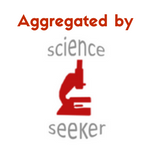By Karen Hock, PhD Candidate in Public Health
Most parents want to give their children the best possible start to life. And when it comes to nutrition, the World Health Organization (WHO) recommends breastfeeding exclusively for 6 months, as well as continued breastfeeding and complementary foods for at least 2 years. But a new product category called toddler milk is giving health experts cause for concern.
Toddler milk is marketed for kids aged 12-36 months. It typically contains powdered milk, vegetable oil, and added sweeteners, such as corn syrup. Compared to cow’s milk, it has more sodium, less protein, and a higher price tag.
The added sugar content is particularly concerning, as research suggests that high intake levels in early life may lead to a preference for sweet foods and diet-related conditions, such as obesity and diabetes. Due to its content of added sugar, no unique nutritional value, and potential to reduce breastfeeding, health experts do not recommend toddler milk, with the WHO even calling it “unnecessary.”
Despite these concerns, sales are quickly increasing in the United States (US), and toddler milk has become the fastest growing category of formulas.
Marketing Toddler Milk
To limit inappropriate marketing of toddler milk and other breastmilk substitutes, the WHO has published the International Code of Marketing of Breastmilk Substitutes. However, as the US has not adopted this code (along with many other countries), toddler milks are widely marketed to consumers through prohibited techniques, including television advertisements, social media influencers, free samples, and unproven label claims. A primary concern among health professionals is that these marketing techniques confuse consumers and mislead them into believing toddler milk is healthy and even better than breastmilk.
For example, the labels of many toddler milks contain structure-function claims, which describe an ingredient’s impact on the body’s structure or function. These claims do not need pre-approval by the Food and Drug Administration (FDA), nor do they need to be backed by evidence. While toddler milks often suggest that ingredients (such as docosahexaenoic acid (DHA) and prebiotics) support brain and immune health, there is little evidence to support their accuracy. In turn, consumers may believe these milks are helpful for their toddlers’ development, increasing purchase intentions.
In a study of over 1,000 parents in the US, nearly 40% of participants believed toddler milk was healthy. In fact, top reasons to give toddler milk were to support nutrient intake (nearly 60%), growth (over 50%), and brain development (about 40%). Similarly, a study of over 2,000 US parents found that brain and immunity claims led many participants to believe that toddler milk was healthier than cow’s milk and would be recommended by pediatricians, even though this contradicts the advice of major health organizations.
To add to the confusion, toddler milks often feature similar packaging designs as infant formula, and can be found on nearby store shelves. As a result, consumers may accidentally provide their infants with toddler milk (which offers inadequate nutrition for infant development) or assume that infants should naturally progress to drinking toddler milk.
Policy Recommendations
In order to stop aggressive marketing tactics, policy action is needed across multiple levels. For example, companies should begin to follow the WHO code, which would limit both marketing of toddler milks directly to consumers and distribution of free samples through healthcare practitioners, among other techniques. Companies can also set nutrition standards for toddler milks to ensure they meet minimum requirements, and update label claims to be truthful and not misleading. Health organizations and government agencies can offer guidance about toddler milk to highlight the value of breastfeeding, as well as concerns over nutrient-poor breastmilk substitutes. Similarly, advocacy groups can raise awareness about inappropriate marketing practices and encourage policymakers to improve existing regulations. For example, federal regulatory agencies can demand stricter requirements for toddler milk labels by including only evidence-based claims and statements differentiating them from infant formulas (such as listing appropriate ages), as well as taking legal action against misleading marketing. At the state level, toddler milks could become subject to sugar-sweetened beverage or sales taxes, and minimum price laws could prevent them from being cheaper than infant formulas.
In turn, these actions can support parents’ ability to feed their toddlers, giving them the best possible start to life.
Picture credit: RODNAE Productions on Pexels
Peer edited by: Tejaswini Petkar, Researcher/Post graduate in Microbiology


Leave a comment